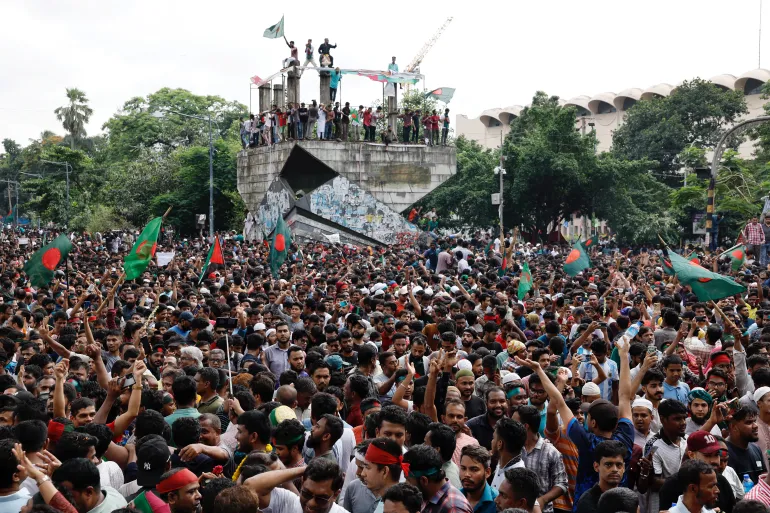The 51st G7 Summit, held in Kananaskis, Alberta, from June 16–17, 2025, has been a pivotal moment for global diplomacy, overshadowed by the escalating Israel-Iran conflict, Donald Trump’s trade policies, and his controversial stance on Russia and China. Hosted by Canadian Prime Minister Mark Carney, the summit brought together leaders from the G7—Canada, France, Germany, Italy, Japan, the UK, and the US—alongside invited guests from India, Ukraine, Mexico, Australia, and others. From Trump’s early departure to finalize a US-UK trade deal, to his remarks on reintegrating Russia into the G7 and inviting China, the summit has been a test of unity amid global economic uncertainty and geopolitical strife. This blog delves into the key developments, bilateral engagements, and the broader implications of the G7’s discussions.
Trump’s Controversial Stance: Russia, China, and the G7
US President Donald Trump, attending his first G7 since 2019, stirred debate by calling Russia’s 2014 expulsion from the G8 a “mistake.” Speaking on June 16, 2025, Trump argued that Russia’s presence could have prevented the ongoing Russia-Ukraine war, stating, “You wouldn’t have a war right now if you had Russia in.” He also suggested he “wouldn’t mind” China joining the G7, a remark that contrasts with the group’s focus on countering China’s trade practices and military expansion. These comments, made alongside Canadian PM Mark Carney, drew mixed reactions. Posts on X noted Trump’s alignment with Russia and China could complicate G7 unity, with one user speculating, “His comments about Russia are interesting too as Iran has close ties with both Iran [sic] and China. It could get messy.”
Trump’s remarks reflect his preference for bilateral dealmaking over multilateral consensus, a stance that has historically disrupted G7 summits. In 2018, he withdrew US support for the joint communique in Quebec, citing trade disputes. This time, Canada abandoned the tradition of issuing a comprehensive communique, opting for chair summaries to avoid similar discord. Trump’s refusal to sign a draft statement urging de-escalation in the Israel-Iran conflict further highlighted his divergence from G7 allies.
US-UK Trade Deal: A Bright Spot Amid Tensions
A significant outcome of the summit was the finalization of a US-UK trade deal, announced by Trump and British PM Keir Starmer on June 16, 2025. The agreement, building on last month’s commitments, reduces tariffs on UK autos and aerospace but maintains a 25% duty on steel. Trump, waving the signed document, called it “a fair deal for both,” predicting job growth and income. Starmer hailed it as a “really important agreement” and a “real sign of strength” for bilateral ties. The deal, formalized during a bilateral meeting, underscores Starmer’s efforts to align with Trump, despite their political differences, including an invitation for a state visit from King Charles III.
The agreement comes amid Trump’s broader tariff war, which has imposed duties on G7 members like Canada (25% on autos, 50% on steel) and paused reciprocal tariffs for 90 days to negotiate deals. The US-UK deal’s success contrasts with ongoing trade frictions, as Canada and Japan seek similar exemptions.
Israel-Iran Conflict Overshadows Agenda
The summit’s planned focus on energy security, critical minerals, AI, and global trade was eclipsed by the Israel-Iran conflict, which intensified after Israel’s strikes on Iranian nuclear and military sites on June 13, 2025, followed by Tehran’s retaliatory missile attacks. Trump, addressing the crisis on June 15, expressed hope for a deal but suggested, “Sometimes they have to fight it out first.” On June 16, he urged Iran to negotiate a nuclear deal “before it’s too late,” claiming, “Iran is not winning this war.” His early departure on June 16, citing the Middle East situation, underscored the crisis’s urgency.
Trump’s veto of an Israeli plan to assassinate Iran’s Supreme Leader Ayatollah Ali Khamenei, reported by a US official, signaled restraint, but his refusal to endorse a G7 de-escalation statement frustrated allies like Starmer and French President Emmanuel Macron, who pushed for diplomacy. Starmer, who discussed de-escalation with Trump and Israeli PM Benjamin Netanyahu, emphasized the need for restraint to prevent regional instability. The conflict’s dominance prompted Canadian Senator Peter Boehm to predict a pivot in discussions, potentially leading to a statement on the war.
Ukraine and Russia: A Divisive Issue
The Russia-Ukraine war, a priority for G7 leaders, faced challenges due to Trump’s ambivalence. Ukrainian President Volodymyr Zelenskyy, attending on June 17, aimed to secure weapons purchases and tougher sanctions on Russia, but Trump’s reluctance to escalate penalties dampened hopes. A proposed oil price cap reduction from $60 to $45—or $30, as Ukraine prefers—lacked US support, with some allies considering unilateral action. Trump’s claim that Russia’s G8 inclusion could have averted the war drew criticism, with European Commission President Ursula von der Leyen insisting sanctions were effective and urging more pressure on Moscow.
Zelenskyy’s bilateral meeting with Trump, scheduled for June 17, was anticipated to be tense, following a heated February 2025 Oval Office encounter. Canada, a staunch Ukraine supporter, faces a delicate balance as Trump pushes for a quick resolution, potentially favoring Russia.
India’s Role and Modi’s Engagements
Indian PM Narendra Modi, arriving on June 16 after a historic Cyprus visit, represented the Global South’s priorities at the G7 Outreach Summit. His participation, despite India-Canada tensions over the 2023 killing of Sikh separatist Hardeep Singh Nijjar, drew criticism from Sikh groups in Canada, who called it a “betrayal.” Carney defended the invitation, citing India’s economic importance and ongoing law enforcement dialogue. Modi’s bilateral meeting with Carney aimed to address trade ($8.6 billion in goods, $14.3 billion in services in 2024) and diaspora issues, while his discussions with Trump, Starmer, and Zelenskyy focused on energy, technology, and counter-terrorism.
Modi’s presence highlighted India’s strategic role, particularly in critical minerals and AI, aligning with Carney’s agenda. However, India’s purchase of Russian oil faced scrutiny, with US senators proposing tariffs on nations like India and China for bypassing sanctions.
Other Bilateral Meetings: Mexico, Australia, and More
Leaders from Mexico, Australia, South Africa, South Korea, Brazil, and the UAE, invited by Carney, sought bilateral engagements with Trump to address trade and security concerns. Mexican President Claudia Sheinbaum, scheduled to meet Trump on June 17, missed the opportunity due to his early departure, impacting discussions on North American trade and fentanyl trafficking. Australian PM Anthony Albanese and South African President Cyril Ramaphosa also prioritized trade talks, with Ramaphosa navigating Trump’s earlier accusations of “genocide” against white farmers. Japanese PM Shigeru Ishiba, meeting Trump on June 16, pressed for tariff relief on auto exports, following inconclusive talks in Washington.
Carney’s Test as Host
For Mark Carney, hosting his first G7 as Canada’s PM was a diplomatic trial. His goals—global leadership, economic growth, and reducing US dependency—were challenged by Trump’s tariffs and the Israel-Iran crisis. Carney’s bilateral with Trump, lasting 70 minutes on June 16, addressed tariffs (25% on Canadian autos, 50% on steel), with Canada’s ambassador Kirsten Hillman emphasizing a no-tariff stance. Carney’s decision to forgo a joint communique aimed to prevent a repeat of 2018’s acrimony, a move praised by analysts like Roland Paris, who noted, “This will be a successful meeting if Trump doesn’t have an eruption.”
Carney’s pre-summit meeting with Starmer in Ottawa on June 14 strengthened Canada-UK ties, with agreements to deepen trade and ratify the UK’s CPTPP accession. His handling of Trump, described as calm and equal by G7 Research Group director John Kirton, set a tone for navigating the summit’s tensions.
Global Economic and Security Challenges
The summit’s economic agenda, including critical minerals supply chains and AI, was overshadowed by Trump’s tariffs, which the World Bank warned could slow global growth. A May 2025 G7 finance ministers’ statement targeted China’s “nonmarket policies” like export subsidies, though China wasn’t named. Tensions over China’s military presence in the South China Sea and Taiwan also surfaced, with G7 ministers expressing concern in March.
Security discussions, beyond Israel-Iran and Ukraine, included countering foreign interference in diaspora communities, a priority for Carney. Trump’s inflammatory remarks about annexing Canada as the “51st state” and taking Greenland, condemned by Starmer and Macron, added friction.
Trump’s Early Exit and Summit Dynamics
Trump’s abrupt departure on June 16, citing the Israel-Iran conflict, disrupted planned bilaterals with Zelenskyy and Sheinbaum. His press secretary, Karoline Leavitt, posted on X, “Much was accomplished, but President Trump will be leaving tonight after dinner with Heads of State.” The move, coupled with his refusal to endorse a de-escalation statement, shifted the summit toward bilateral conversations rather than unity. Macron called Trump’s exit “positive” for Middle East ceasefire efforts, but analysts like Josh Lipsky warned of a fractured G7, questioning, “Is this still a family?”
Why the G7 Summit Matters
The 2025 G7 Summit exposed the challenges of maintaining unity amid Trump’s unilateralism, trade wars, and global conflicts. Key takeaways include:
- Trump’s Disruptive Influence: His Russia and China remarks, tariff policies, and early exit underscored his preference for bilateralism, testing G7 cohesion.
- US-UK Trade Progress: The finalized deal with Starmer offers a model for navigating Trump’s tariff regime, though steel duties remain a hurdle.
- Israel-Iran Crisis: The conflict’s dominance highlighted the G7’s limited leverage without US alignment, with Trump’s stance complicating de-escalation efforts.
- India’s Strategic Role: Modi’s participation amplified India’s voice on global issues, despite domestic criticism in Canada.
- Carney’s Diplomatic Test: Carney’s pragmatic hosting, avoiding a communique and managing Trump, preserved summit stability but yielded limited consensus.
The summit reflects a volatile world, with the G7 struggling to address trade, Ukraine, and Middle East crises while navigating Trump’s unpredictability. As one X post noted, “Modi’s G7 visit shows India can’t be sidelined, no matter the tensions.” With Trump set to host the 2027 G7, the group’s relevance and unity face ongoing scrutiny.
Disclaimer: This blog is based on publicly available information from news reports, official statements, and social media posts about the G7 Summit 2025. The content has been rephrased for clarity and engagement while preserving the essence of the original details. Developments regarding Trump’s policies and G7 outcomes are subject to change.
Source: Information derived from news reports by DW, Reuters, BBC, AP News, PBS News, NBC News, Financial Express, and posts on X.




